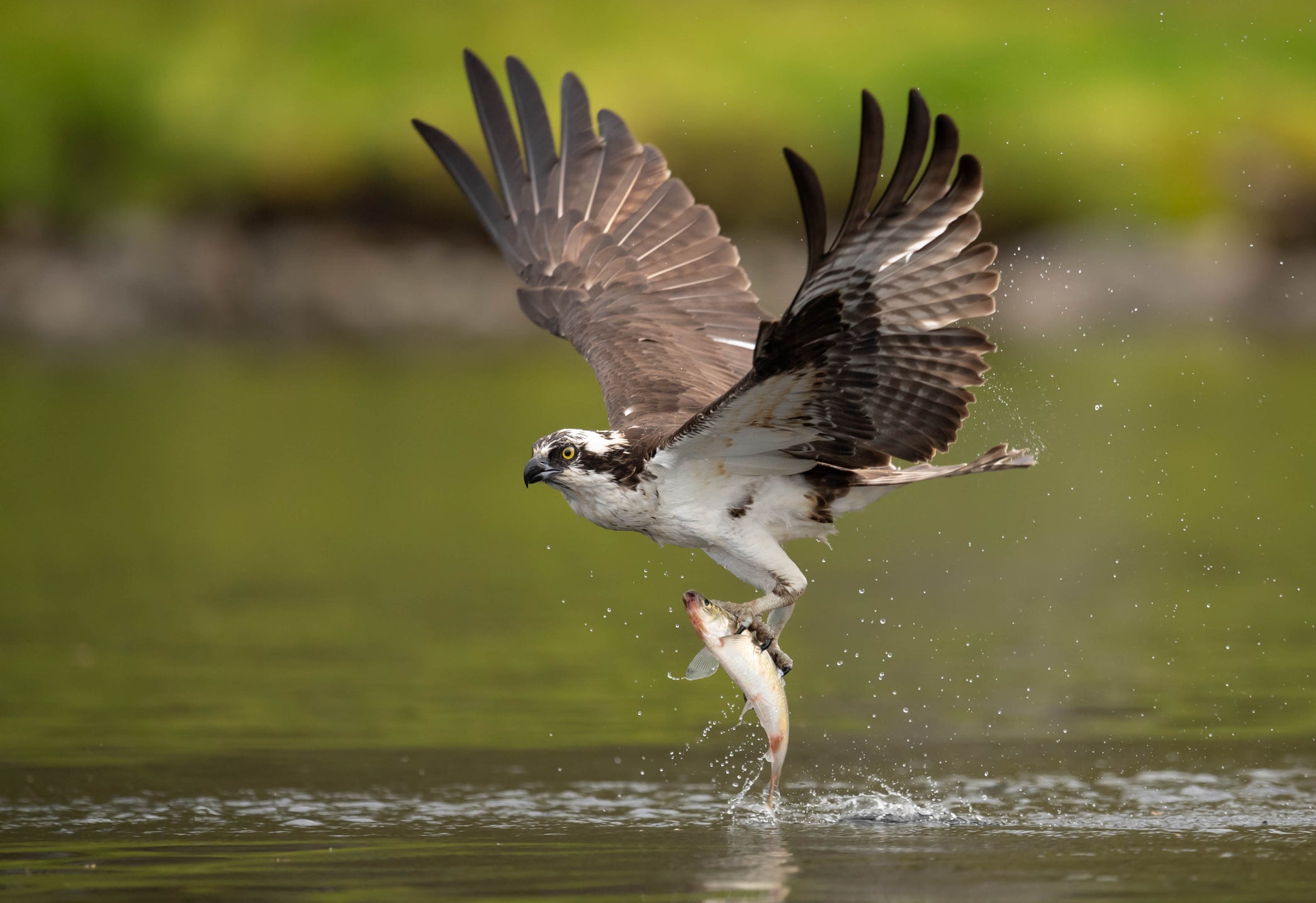Ospreys make first breeding attempt in southern Britain for 200 years
Conservationists are optimistic after a pair nesting in Poole Harbour have their first egg
A pair of ospreys have laid an egg in their nest at a secret location in the Poole Harbour area, which experts believe is the first breeding attempt by the species in southern Britain in almost 200 years.
The species was once widespread across Europe, but was persecuted to extinction in Britain by the 1840s, with birds killed for taxidermy and eggs stolen by collectors.
In the mid-20th century the birds returned to Scotland, and they have slowly spread. However, in the 70 years since they have been back, they have not previously nested in the south of the country.
The new nesting attempt is the result of an osprey reintroduction project which began in 2017, which aims to rebuild the osprey’s historical range.
According to the charity Birds of Poole Harbour, which carried out the reintroduction alongside the Roy Dennis Wildlife Foundation, the pair of birds, known as CJ7 and 022, first met in spring 2021 after their arrival back at Poole Harbour following their migration to wintering grounds in West Africa.
The charity has been tracking the birds’ movements closely. They said the female, CJ7, first visited Poole Harbour in 2017 during the first year of the reintroduction project and has visited nesting platforms installed to attract ospreys to breed every year since.
The male, 022, was released as part of the reintroduction programme during 2019. That year he made his first migration to West Africa and spent two years there. He then returned on 18 May 2021 which is when he first met CJ7, although he was too young to breed at the time.
“The couple spent the summer of 2021 pair bonding and establishing nesting territories, indicating that they were keen on breeding here in the future,” the charity said. The birds then left Poole Harbour in early September 2021 and those involved in the project were hopeful they would return this spring.
Paul Morton, from Birds of Poole Harbour, said: “When 022 and CJ7 left on migration last autumn, we then had an anxious time waiting seven months to see if they had survived the journey.
“Flying from Britain to West Africa and back again is incredibly dangerous, with the birds facing many challenges along the way, including the Sahara Desert, adverse weather conditions and illegal hunting. Luckily they both returned safely earlier this month, with CJ7 arriving on 5 April and 022 a few days later on 10 April.
“Having spent the whole of last summer together their instincts to breed this summer kicked in straight away and the pair settled on a nest, which is exactly what we were hoping to see.”
Ospreys’ diets consist entirely of fish, which is one of the reasons Poole Harbour was selected for the reintroduction project.

Ospreys that breed in Scotland and Northern England pass through the harbour on migration each spring and autumn, feeding on species such as grey mullet and flounder, before continuing on their journey.
Poole Harbour has large shallow channels and bays, making it a perfect hunting ground for the birds, whose wingspans can reach up to 1.8 metres.
The charity said 022 can regularly be seen hunting in the harbour.
“Should the breeding attempt be successful, he will be responsible for providing fish for the whole family throughout the rest of the season,” the organisation said.

It is hoped CJ7 could lay more eggs over the next week, which will then see a 35-40 day incubation period begin. If all goes to plan, the team hopes for a hatching date of in late May.
Mr Morton added: “To know there’s now an osprey egg in a Poole Harbour nest is just amazing. This is the culmination of seven years’ hard work. Projects like this are always going to take time, but it’s such a great feeling to know that the birds have reached this important milestone, and to see CJ7 incubating her first egg is stunning.
“There’s still a lot for them both to learn as new parents, and breeding success is certainly not guaranteed. However, everything we’re seeing at the moment is looking really positive, and hopefully by late May we’ll begin to see them feeding their newly hatched fledglings.”
In anticipation, Birds of Poole Harbour has installed a livestream camera on a favoured nest platform to capture the birds’ progress.
But it said it “didn’t anticipate that the camera view would be slightly altered, thanks to several mating attempts from the ospreys over the last two weeks on top of the camera”.
The livestream can be watched on the Birds of Poole Harbour website and YouTube channel.




Join our commenting forum
Join thought-provoking conversations, follow other Independent readers and see their replies
Comments